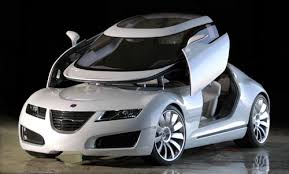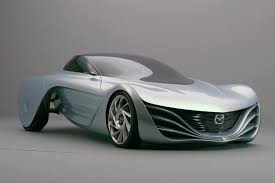While many of us know that the Volkswagen Beetle Car originated in Germany and was produced as the "people's car", few know how its origins are tied in with Porsche. So what is the story, you ask?
It all started when Adolf Hitler had a vision of his countrymen being able to own a cheap car and that they would use these cars to travel on great networks of roads called autobahns. At the same time, a man named Ferdinand Porsche had just set up an automotive design company, which became known as the Porsche Büro. The company patented a sophisticated independent front suspension system, which consisted of transversely mounted torsion bars connected to two trailing arms on each side. At the time, this was lighter than most other common types of suspension. In 1931, a German motorcycle company, Zündapp, asked Porsche if he could design a suitable car for them, this was followed by the design of a streamlined two-door sedan, which had lines similar to the Beetle. It was designated the Type 12.
Hitler saw Porsche's work and invited him to submit a design for this peoples car with requirements that it had to be cheap, economical, fast (all of 60 miles per hour) and to accommodate two adults and three children comfortably. So, in January 1934 Porsche gave Hitler a proposal for his car and by June that year work had begun.
While the idea of a people's car wasn't exactly a new one as before 1930 there were many attempts to design such a car, it wasn't until Porsche that the concept was met. Creating such a car was much more than design and engineering, it also required finding a way to create the car in a way that an average worker only had to spend his yearly wage to buy it.
The production of the car went well until World War II when manufacturing had to have a military twist. Believe it or not Volkswagen came up with a military version of the Beetle and they were called the Kübelwagen and Schwimmwagen. Porsche also at this time produced several designs for heavy tanks but lost out to Henschel & Son in both contracts that ultimately led to the Tiger I and the Tiger II. However, not all this work was wasted, as the chassis Porsche designed for the Tiger I was used as the base for the Elefant tank destroyer. Porsche also developed the Maus super-heavy tank in the closing stages of the war, producing two prototypes.
By 1945 the Volkswagen factory fell to the British and Porsche lost his position as Chairman of the Board of Management of Volkswagen. British Major Ivan Hirst was put in charge of the factory and Porsche was arrested for war crimes, but not tried. During his 20-month imprisonment, Ferdinand Porsche's son, Ferry Porsche, decided to build his own car because he could not find an existing one that he wanted to buy. He also had to steer the company through some of its most difficult days until his father's release in August 1947.
As time went by, both Volkswagen and Porsche car companies collaborated to make the VW-Porsche 914 and 914-6, whereby the 914-6 had a Porsche engine, and the 914 had a Volkswagen engine. In late 2005, Porsche took an 18.65% stake in the Volkswagen Group, further cementing their relationship, and preventing a takeover of Volkswagen, which was rumored at the time. Speculated suitors included DaimlerChrysler AG, BMW, and Renault.
On March 26, 2007, Porsche took its holding of Volkswagen shares to 30.9%, triggering a takeover bid under German law. On September 16, 2008, Porsche increased its shares by another 4.89%, in effect taking control of the company, with more than 35% of the voting rights. It again triggered a takeover bid, but this time over Audi.
While the history of a man named Porsche and a car called the Volkswagen have worked hand-in-hand, today each have their own unique meaning as well as their own unique looks.
It all started when Adolf Hitler had a vision of his countrymen being able to own a cheap car and that they would use these cars to travel on great networks of roads called autobahns. At the same time, a man named Ferdinand Porsche had just set up an automotive design company, which became known as the Porsche Büro. The company patented a sophisticated independent front suspension system, which consisted of transversely mounted torsion bars connected to two trailing arms on each side. At the time, this was lighter than most other common types of suspension. In 1931, a German motorcycle company, Zündapp, asked Porsche if he could design a suitable car for them, this was followed by the design of a streamlined two-door sedan, which had lines similar to the Beetle. It was designated the Type 12.
Hitler saw Porsche's work and invited him to submit a design for this peoples car with requirements that it had to be cheap, economical, fast (all of 60 miles per hour) and to accommodate two adults and three children comfortably. So, in January 1934 Porsche gave Hitler a proposal for his car and by June that year work had begun.
While the idea of a people's car wasn't exactly a new one as before 1930 there were many attempts to design such a car, it wasn't until Porsche that the concept was met. Creating such a car was much more than design and engineering, it also required finding a way to create the car in a way that an average worker only had to spend his yearly wage to buy it.
The production of the car went well until World War II when manufacturing had to have a military twist. Believe it or not Volkswagen came up with a military version of the Beetle and they were called the Kübelwagen and Schwimmwagen. Porsche also at this time produced several designs for heavy tanks but lost out to Henschel & Son in both contracts that ultimately led to the Tiger I and the Tiger II. However, not all this work was wasted, as the chassis Porsche designed for the Tiger I was used as the base for the Elefant tank destroyer. Porsche also developed the Maus super-heavy tank in the closing stages of the war, producing two prototypes.
By 1945 the Volkswagen factory fell to the British and Porsche lost his position as Chairman of the Board of Management of Volkswagen. British Major Ivan Hirst was put in charge of the factory and Porsche was arrested for war crimes, but not tried. During his 20-month imprisonment, Ferdinand Porsche's son, Ferry Porsche, decided to build his own car because he could not find an existing one that he wanted to buy. He also had to steer the company through some of its most difficult days until his father's release in August 1947.
As time went by, both Volkswagen and Porsche car companies collaborated to make the VW-Porsche 914 and 914-6, whereby the 914-6 had a Porsche engine, and the 914 had a Volkswagen engine. In late 2005, Porsche took an 18.65% stake in the Volkswagen Group, further cementing their relationship, and preventing a takeover of Volkswagen, which was rumored at the time. Speculated suitors included DaimlerChrysler AG, BMW, and Renault.
On March 26, 2007, Porsche took its holding of Volkswagen shares to 30.9%, triggering a takeover bid under German law. On September 16, 2008, Porsche increased its shares by another 4.89%, in effect taking control of the company, with more than 35% of the voting rights. It again triggered a takeover bid, but this time over Audi.
While the history of a man named Porsche and a car called the Volkswagen have worked hand-in-hand, today each have their own unique meaning as well as their own unique looks.













